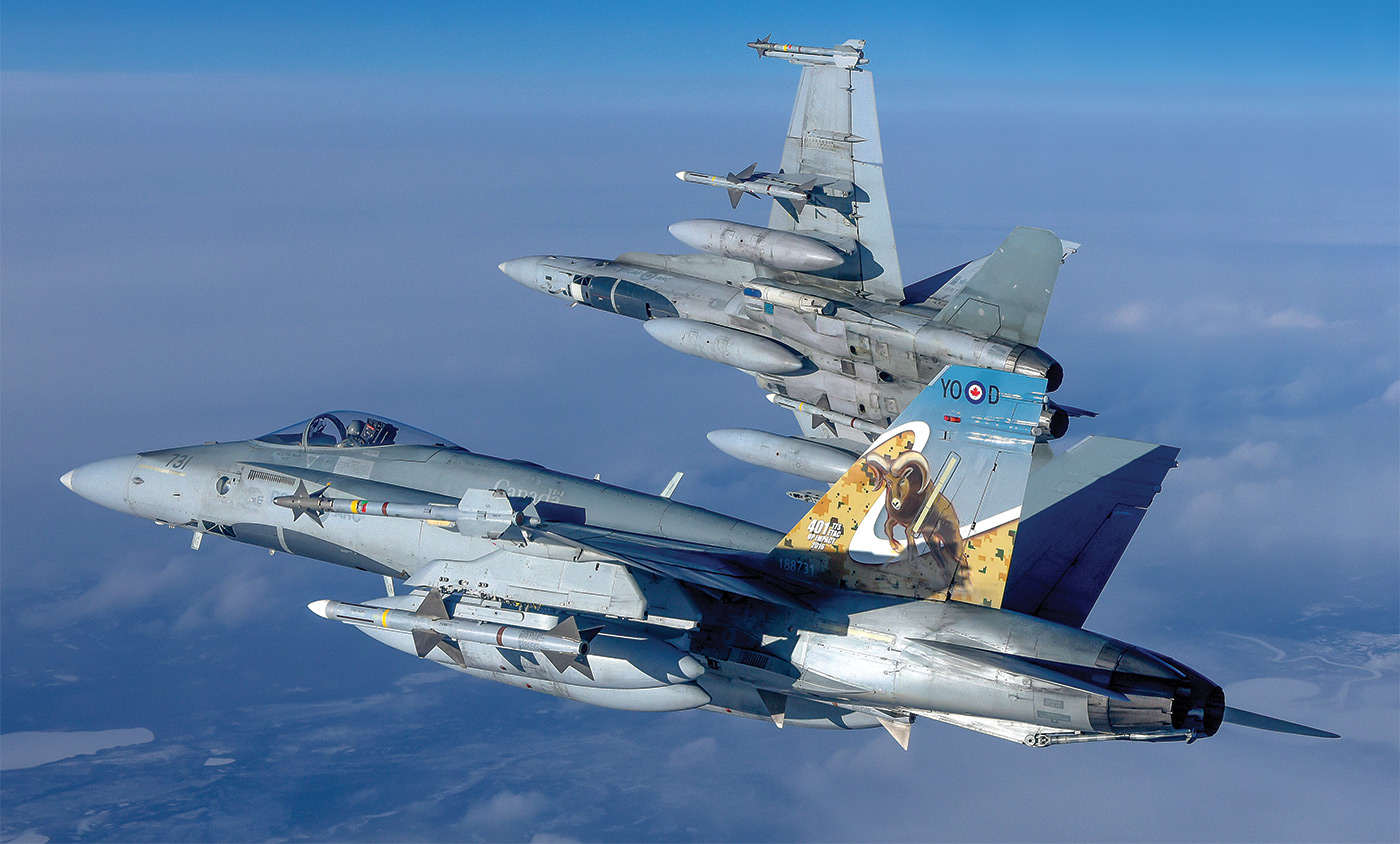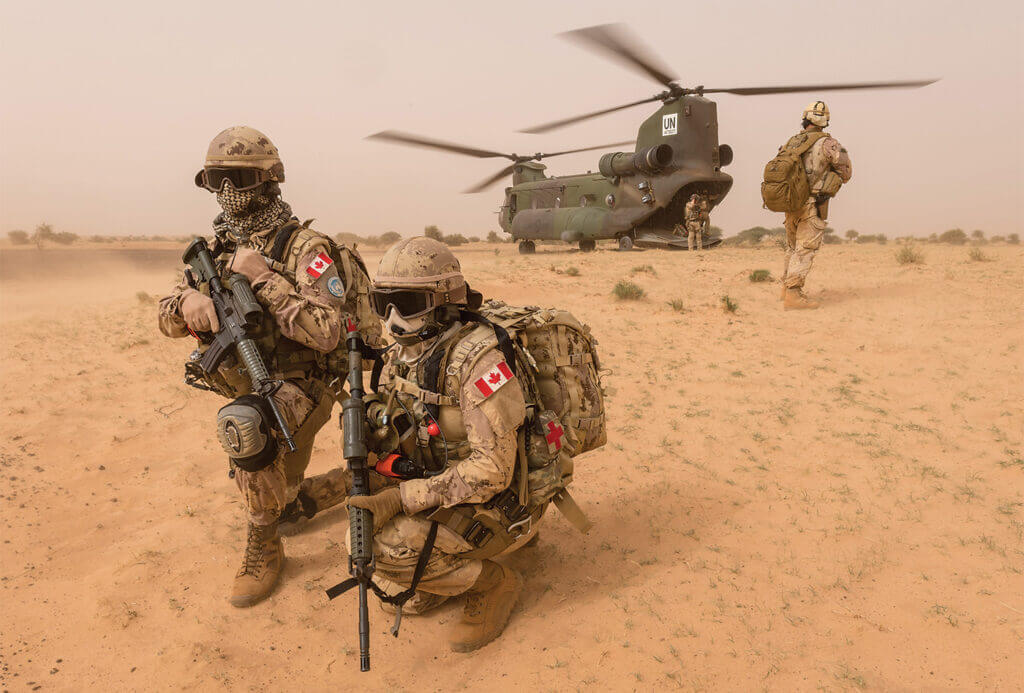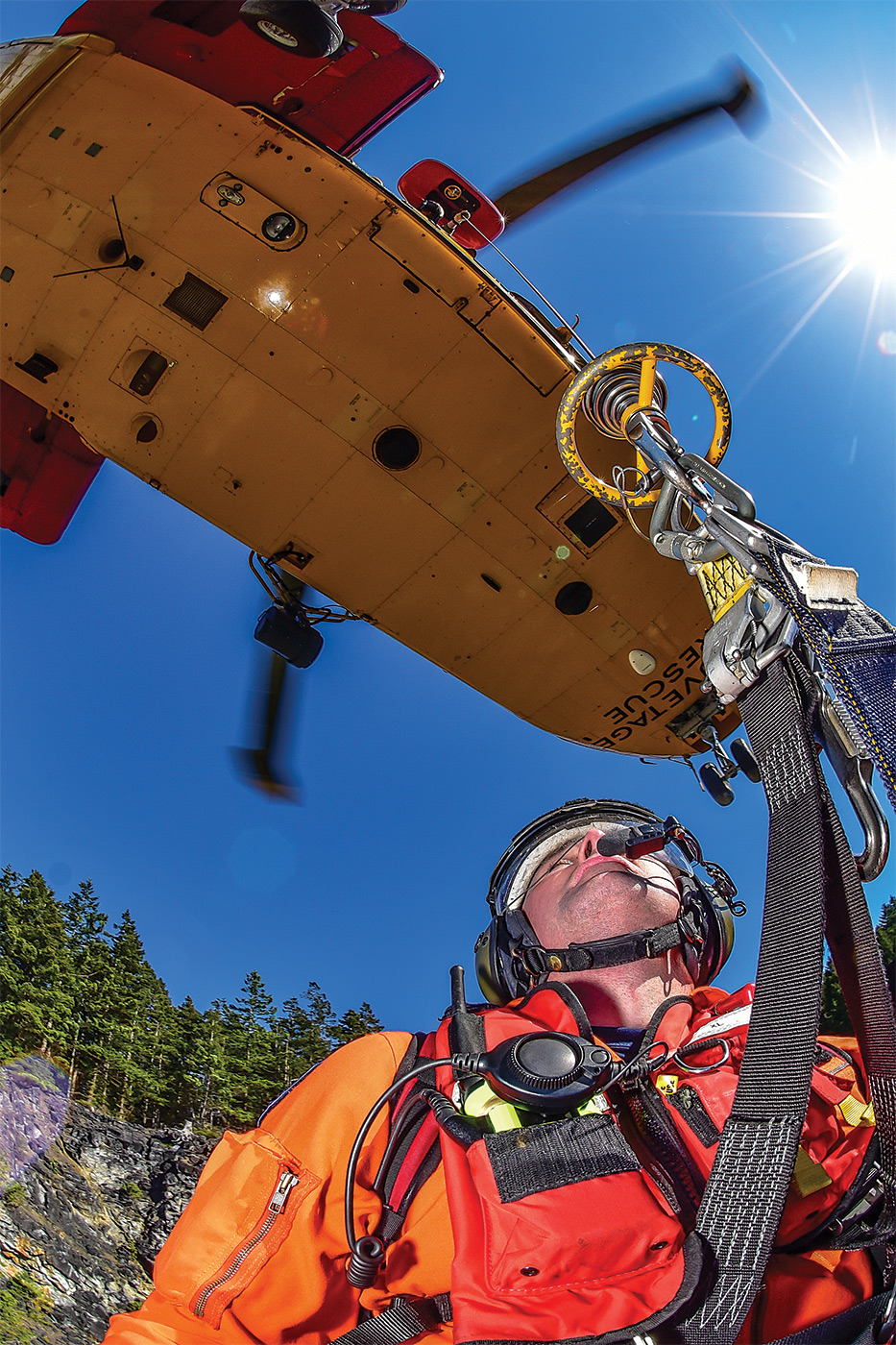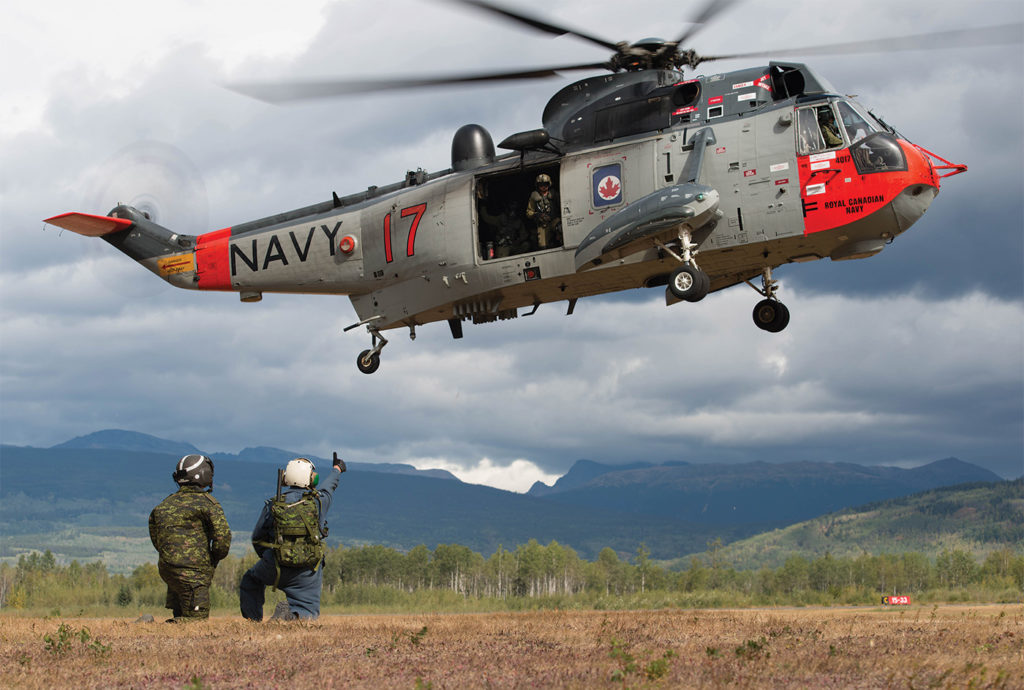Estimated reading time 15 minutes, 35 seconds.
Agility.
It’s a word LGen Al Meinzinger returns to frequently in any discussion about the capabilities of the Royal Canadian Air Force (RCAF).

It may be part of an organization maxim–AIR Power (Agile, Integrated, Reach and Power)–through which the Air Force views itself, but from his earliest days as a young helicopter pilot to his current position as RCAF commander, Meinzinger has seen time and again the Air Force’s ability to adapt to changing circumstances on the fly.
And it’s a talent he wants to strengthen.
As commander of the Air Wing deployed to Kandahar, Afghanistan, in 2011, Meinzinger became convinced the Canadian Armed Forces (CAF), and especially the RCAF, approach to operations offers “a turning radius” few allies can match.
In the months since he assumed command on May 4, that same adaptive response has been evident in the deployment of new forward aeromedical evacuation capability for Mali, a soon-to-be second tactical aviation detachment for Iraq (the current detachment in Erbil led by 430 Tactical Helicopter Squadron will transfer to 427 Special Operations Aviation Squadron, which was the first helicopter squadron to deploy to Iraq in 2016), a five-pack of CF-188 Hornets for NATO air policing in Romania, and an overall high operational tempo.
“We talk of agility being one of the keystones of the Air Force and we show this time and time again,” he said. “I think we grow very solid leaders in the RCAF and when we place them in operational circumstances, they are able to get the job done in a very agile and effective way.
“In Afghanistan, it was the ability of the Air Wing units to accept tasks on the fly. We would adjust mission objectives, even within a particular sortie. Our Chinooks would do multiple tasks on one trip. Our UAV [unmanned aerial vehicle] would be servicing dozens of customers’ requirements on one sortie.
“But we could be flexible. If there was something more urgent to be accomplished, we would re-task on the fly. As such, we were the go-to nation in many cases, and that made us very distinct in that specific operational milieu. I think it is this agile and nimble quality we need to continue to acknowledge and to inspire within our personnel.”

Meinzinger is the 20th commander of the RCAF since the unification of the Canadian Armed Forces and very much a product of its professional development system. His father was a chief warrant officer and he often jokes that he was born into Air Force blue diapers in Trenton, Ont.
“The RCAF kind of runs through my blood,” he said.
As the first commander from the tactical aviation community since LGen Ken Pennie in 2003, though, Meinzinger’s approach to leadership is shaped, in part, by his formative years working shoulder to shoulder with the Canadian Army as a CH-135 Twin Huey and CH-146 Griffon pilot.
He did two tours with both 408 Tactical Helicopter Squadron and 403 Helicopter Operational Training Squadron, the schoolhouse for the CH-146 Griffon, and attended the Army staff college, a core component of Canadian Army officer development.
“Tactical aviation is by its definition a supporting effort, delivering effects largely in support of our Canadian Army, fostering a joint mindset. You learn that success comes by virtue of the team effort,” he said. “The Air Force was at one point a very siloed organization, but today we build strength by working together.”
Meinzinger came into the job with his finger firmly on the pulse of the organization, having previously served as Deputy Commander of the Air Force and, most recently, as the CAF Director of the Strategic Joint Staff. But in the months since he took command, he’s met with the NATO air chiefs, the air chiefs of the Americas, and attended the Royal Air Force 100th anniversary celebrations, a gathering of about 80 air chiefs, to “get an appreciation for how other air forces are seeing the world, how they see contemporary challenges and how they see the future.”
As with RCAF commanders before him, he has a responsibility to generate the people and capabilities for the Air Force of the future, a timeframe out beyond 2025. But it’s a mandate that often demands his attention in the here and now.
For organizational purposes, he’s grouped his immediate priorities around what he calls the four Ps: people, policy, program and posture.
All are significant areas of focus, but primus inter pares (first among equals) is personnel–members and their families are the reason for success. The RCAF consists of about 12,500 regular, 2,000 reserve and 1,500 civilian members, a modest force that historically has rarely reached full manning.

The RCAF carefully monitors and manages the delta between the established number of positions and the actual workforce, increasing retention and recruitment efforts when a trade slips below 85 per cent staffing levels.
Meinzinger acknowledged that while the CAF is developing Forces-wide recruitment and retention strategies, a critical part of his job will be developing supporting Air Force specific programs.
“Our amazing personnel underwrite everything we do,” he said. “There are a raft of initiatives and ideas that I want to roll out during my command. We have to continue to attract young Canadians that want to join the Air Force. And, on the other end, we need to retain as much of that talent as possible.”
One area of particular concern is pilots. He noted recent surveys that suggest exponential growth in passenger traffic in China, and International Air Transport Association figures projecting 7.2 billion passengers to travel in 2035, all of which is expected to put pressure on pilot retention. While trends can be cyclical and forecasts not always as alarming as they might initially sound–he noted that aircraft sales and increased aircraft manufacturing tell two different stories–his discussions with air chief counterparts confirm “there is a huge pull to the civilian sector.”
The CAF retention strategy includes ideas such as reducing provincial barriers for military members and their families by, for example, allowing the transfer of a spouse’s professional credentials or a common driver’s licence to mitigate some of the stress and costs of moving.
But Meinzinger wants Air Force-tailored initiatives as well.
“Within my domain there are things we can do that will make the job of being in the RCAF that much more gratifying,” he said, such as greater flexibility in career paths to reduce the number of moves. Already, he’s reached out to at least one captain at 8 Wing Trenton to understand his decision to make a career change.
The Air Force also faces a significant demand for skilled people as it introduces remotely piloted aircraft, strives to manage the vast streams of data from ever more aircraft sensors, and transitions from legacy to new or upgraded platforms.
To do that, the Air Force will have to grow capacity. Meinzinger wouldn’t specify a number but he acknowledged “the challenge will be to get the bodies that sit in those seats as we build these new capabilities.”

One example of shoring up a key capability can be found in the CAF decision to pull the CP-140 Aurora from its intelligence, surveillance and reconnaissance (ISR) role in Operation Impact over Iraq and Syria after conducting 881 missions over about three years.
“That was done recognizing the employment of the long-range patrol capability was focused very much on overland ISR, but what was happening was we were atrophying our antisubmarine warfare (ASW) skill sets because the Aurora crew force was fixed on continuous manning for this operation,” he said. “We recognized the importance of our ASW capability, so a decision was made at the appropriate time, mindful of coalition requirements to repatriate the Aurora and give the crew force an opportunity to build the ASW skill set back up.”
The RCAF has also carefully managed the transition from the CH-124 Sea King to the CH-148 Cyclone maritime helicopter by reducing the number of helicopter air detachments available to Royal Canadian Navy frigates as aircrews and maintainers are trained on the new aircraft. The first Cyclone embarked on HMCS Ville de Quebec this summer and flew about 85 hours in its first month, “a great milestone for the program,” he said, and more helicopter air detachments are being returned to support the Navy.
But that “dip” in operational output isn’t an option on the fixed-wing search and rescue (FWSAR) aircraft program. To take delivery of the CC-295 as the CC-115 Buffalo and CC-130H model Hercules are retired from service, while maintaining 24/7 availability of aircraft and crews, “we have built a very elaborate implementation plan to ensure we can sustain our critical SAR posture across the country. This implementation plan sees a very detailed mapping of individuals as they transition and are trained on the new aircraft,” said Meinzinger.
Crews from the Hercules will help bridge the transition, but will leave the Air Force reliant on the CC-150 Polaris strategic tanker fleet for about five years. “There will be a period of time where we’ve only got the single tanker in the fold, and domestic operations will remain primordial as we go through that transition,” he said.

To increase the “bench strength” in many trades, Meinzinger aims to leverage Reserve forces. He has set a notional growth target of 400 additional class A and B reservists, either through new recruits or by encouraging those leaving the Regular Force to remain with the Reserves.
“In my experience, we would not have been able to sustain the effects delivered by the Air Wing in Afghanistan be it not for the strength of our Air Reserve. In the Air Force model, they are fully integrated into day-to-day operations. We need to capitalize on their talent where we can to increase our operational capacity moving ahead.”
Policy, program and posture
The Liberal government’s 2017 defence policy contained 13 directives for the Air Force on air- and space-based capabilities. To ensure alignment with the policy, Meinzinger has instructed his senior team–from the early concepts development work at the RCAF Aerospace Warfare Centre (RAWC) to project requirements at the Directorate of Air Requirements and capabilities considerations at Air Force Development–to view everything “through the lens of the policy document . . . to ensure we stay focused on the objectives.
“If we are doing something that is not directly related to the policy, we need to ask if we should be doing this,” he said.
At present, the Air Force has about two dozen projects in the identification or options analysis phases of the procurement process. Ensuring each one meets its timeline is a key priority.
“We have to hit the mark,” he said. “The money in the defence policy is very much booked year by year, so I want to be able to hit the targets and not be the reason we’re having to re-profile funds within the fiscal framework.”
No project is more visible, or more politically charged, than future fighter capability. While other departments play large roles in determining which fighter jet will eventually replace the CF-188 Hornet, Meinzinger is determined that the Air Force hold up its end.

“I do not want any slippage in the timelines to be the consequence of our inability to get the work done,” he said.
A draft request for proposal (RFP) is slated for this fall and the final document to bidders should be issued in the spring of 2019, with contract award to follow in late 2021 or early 2022.
At the same time, the Air Force is preparing to receive the first of 18 Australian F/A-18A/B Hornets in early 2019 to provide additional aircraft capacity to support the current NORAD and NATO commitments.
After modifications to bring them up to a similar standard as the Canadian Hornets, they will be integrated into the fleet at the two main operating bases in Bagotville, Que., and Cold Lake, Alta.; seven other F/A-18A Hornets will be used for spare parts.
The RCAF is also balancing the sequencing of a range of other projects that overlap the fighter file, including replacements for the CC-150 Polaris tankers, the fighter lead-in training jet, and even the iconic CT-114 Tutor, which serves with the Canadian Forces Snowbirds demonstration team.
Future aircrew training (FAcT), which will combine pilot, air combat systems officer and airborne electronic sensor operator training in one comprehensive program, will be the next major decision in the pipeline; an RFP is expected in 2019 and contract award by 2021.
Meinzinger said that while the future fighter and FAcT are distinct efforts, the eventual solutions for both will significantly influence decisions about the other overlapping programs.
The new defence policy also outlines a host of operations the government expects the CAF to be able to deliver concurrently, if required, ranging from NORAD and NATO obligations, to short-term domestic operations, and longer-term complex international engagements.
For Meinzinger, all of that speaks to posture and readiness.
“As I consider the deductions from this new reality, I realize that the Air Force is going to need more capacity to enable operational output,” he said. “This capacity will come from new projects and greater bench strength within the RCAF.”
Innovative culture
Squadrons and tactical-level units are “the lifeblood of the RCAF,” said Meinzinger at his change of command ceremony in May. Like his predecessor, LGen Mike Hood, he’s keen to pursue an innovation agenda that encourages new thinking and new ideas to rise throughout the ranks. But he also wants to clearly understand the implications of any new changes at that tactical level.
“When I make decisions, I want to weigh the impact of those decisions from a bottom-up perspective. What does a change truly mean to the members of the RCAF at the tactical level squadrons and units?” he said. “It’s a bit of a nuance, I suppose, [but] I want to stay focused on this level of the Air Force because it is our team at this level that ultimately delivers the effect.”
Hood introduced several initiatives to foster an innovative culture and an entrepreneurial mindset in the Air Force, including seconding officers to technology companies and to Communitech, a tech start-up and support hub in Waterloo, Ont. He also launched a way for all members of the Air Force to pitch ideas directly to senior leadership, modeled on the popular TV show, Dragons’ Den.
Meinzinger intends to continue those initiatives, but perhaps with his own twist.

“I always thought we should be underwriting these ideas,” he said. “We should have a bag of money on the table, and if the idea is sound, and they typically are, we would seed some money” for proof of concept.
Changing elements of an orderly military culture that is hardwired to think in hierarchical and linear terms will be a challenge, but he recognizes that the generation he’s seeking to recruit has a different way of approaching problems.
“The Millennials who join the Air Force are already there. They are inquisitive. They rightfully challenge the status quo when the status quo clearly doesn’t make much sense,” he said.
“There is a great deal we can gain from them. We don’t want to stifle any good idea because of a lack of confidence that it is just not going to fly or a worry that it’s not going to be received well by senior RCAF leadership.”
Wit robotics, autonomy, artificial intelligence, quantum computing and other disruptive technologies about to become more prominent in Air Force capability, he knows a change of mindset is required.
“We need to accept the idea of failing fast. We generally avoid failing as military officers. [But] if you are trying things out, you might as well figure out if it is going to work very quickly and then move on to the next good idea.”
As a former commander of an operational training unit and the commandant of the Royal Military College of Canada (RMC) in Kingston, Ont., Meinzinger has seen firsthand what can be learned from Millennials.
“I’ve got kids and I see how they approach problems. At RMC, I was exposed to a thousand inspiring cadets on any given day, and I was always trying to understand, why is it that they are seeing things in a particular way? It’s because they are approaching it from a different perspective. If we can capitalize on the diversity of perspective in the RCAF, I think we can be a better organization. That diversity is just going to add value, potency and greater agility within our great Air Force.”


You ought to be a part of a contest for one of the highest quality blogs on the internet.
I will highly recommend this site!
Thanks for the feedback. Much appreciated!
I have a few things to say regarding “Meinzinger has instructed his senior team–from the early concepts development work at the RCAF Aerospace Warfare Centre (RAWC) to project requirements at the Directorate of Air Requirements and capabilities considerations at Air Force Development–to view everything “through the lens of the policy document . . . to ensure we stay focused on the objectives.”
I had an opportunity to work within this group (then called CFAWC) which consisted of a few Captains and Majors et al. all of whom were not experts in innovation nor policy. The group may have been re-invented since but when I was there I was very disappointed in the lack of funding and backing from the higher ups (Government) so that this group could function as a research think tank and actually produce substantive work. We did work with DRDC but it seems to me that these two organizations should be closer or merge. CFAWC just seemed to be some pet project that someone formed to get a promotion. Things may have changed, and I do hope it has. It was embarrassingly small, underfunded and lacked depth.
One problem is that the military rotates personnel to take on new roles every few years, and CFAWC was no different, what the CF needs to think about is growing experts, and specializing, i.e. create a think tank and be the nucleus/genesis of innovation. DRDC should be enveloped into the CF to perform the R&D experimentations.